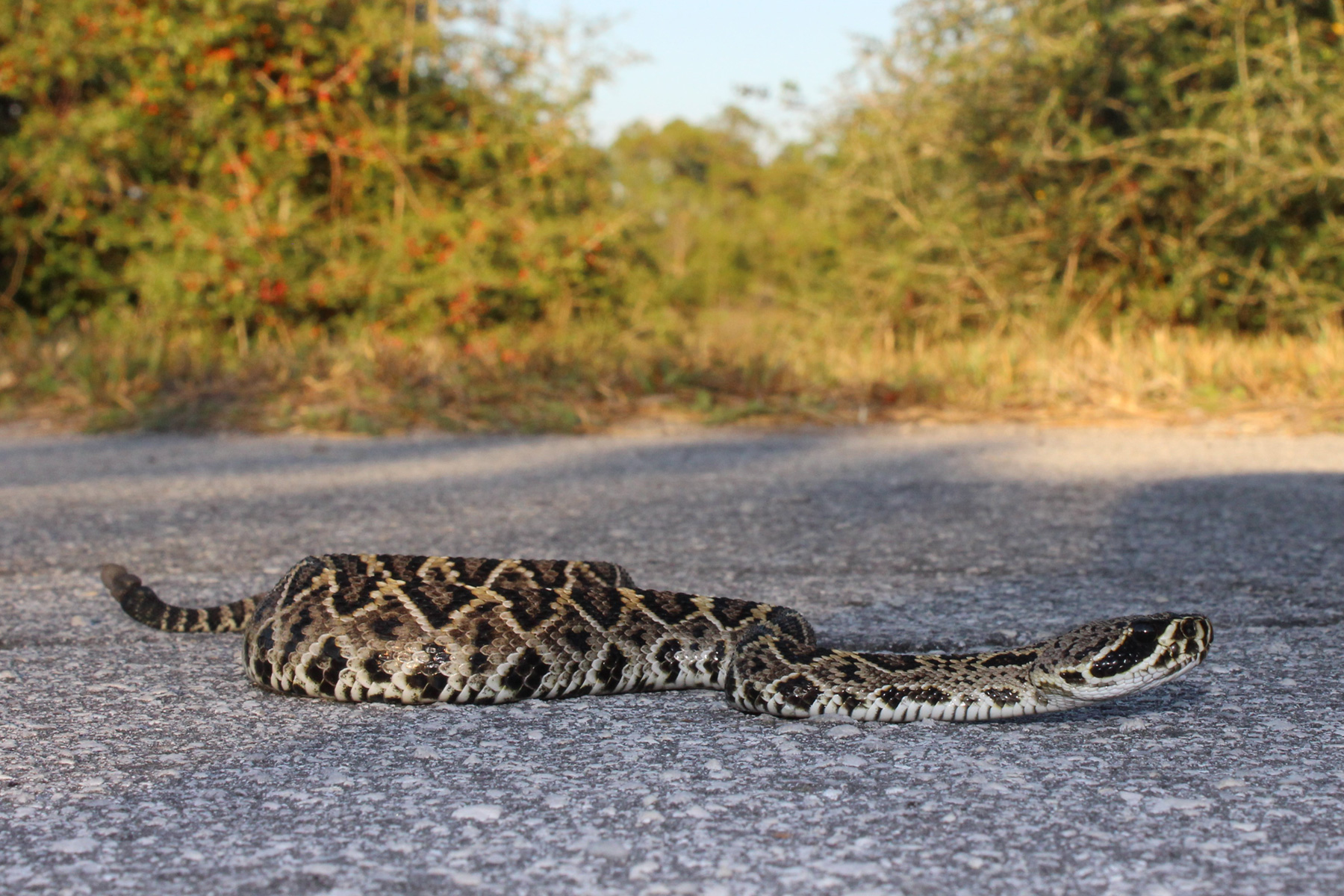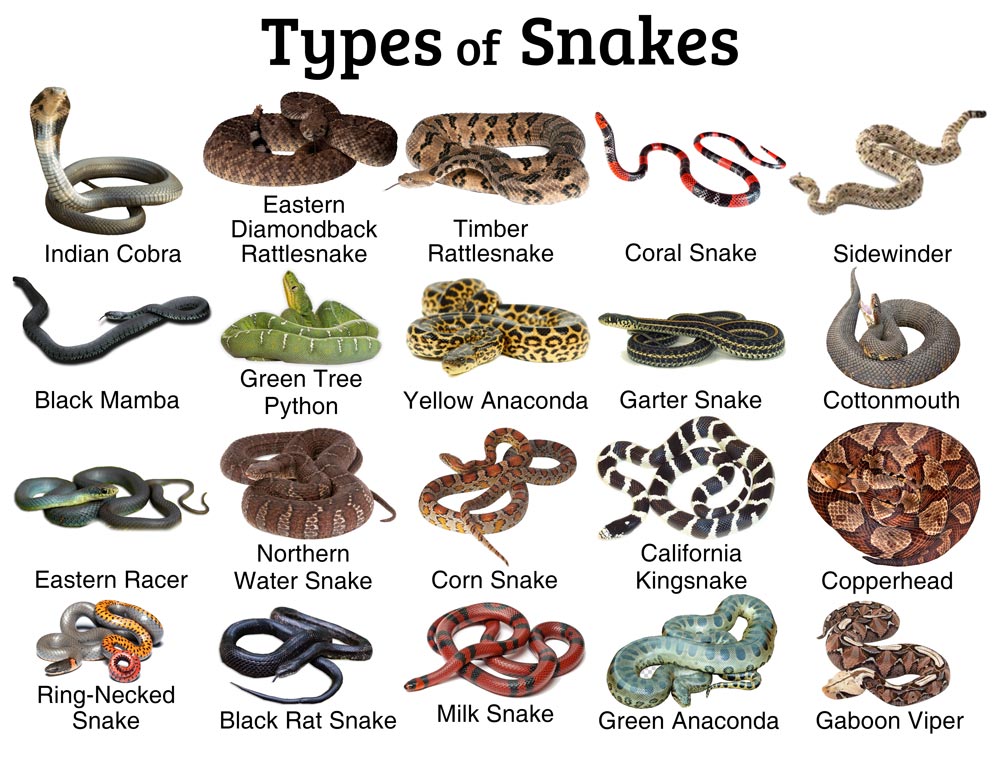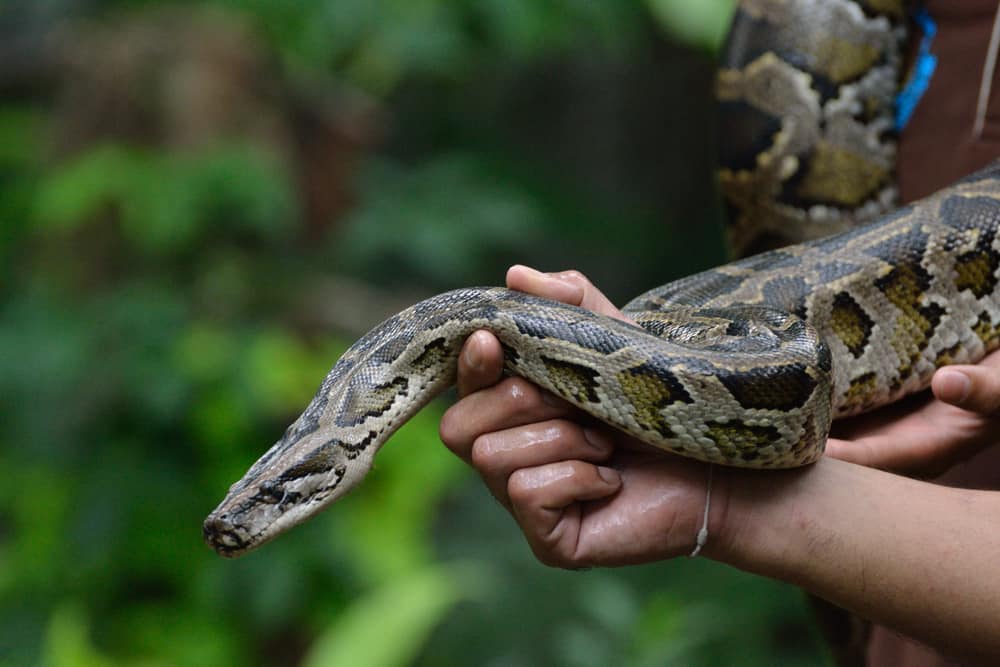
Eastern Diamondbacked Rattlesnake Florida Snake ID Guide
Snakes live an average of 2-8 years in the wild, and many live double this amount in captivity. Predation is one of the biggest enemies to a snake's long and healthy life. This is why captive snakes, like many other animals, live longer than their wild counterparts. Snakes face many enemies in the wild, such as birds of prey, cats, raccoons.

Where Do Snakes Live? WorldAtlas
It depends on the species, but most snakes tend to live long lives. For example, corn snakes have a lifespan of 5-10 years, ball pythons can live for 20-30 years, and kingsnakes often live for 12-15 years. Make sure you do your research on the type of snake you want beforehand to determine if you're ready for the time commitment that comes with it.

Cottonmouth snakes Facts about water moccasins Live Science
Plan for about 15 years if you commit to raising one of these reptiles and giving her a good home. She might even make it to 20 under the right conditions. Interestingly, this snake lives only a relatively short time in her natural habitat, just about six to eight years.

So, How Long Do Snakes Live? It Depends. Happyserpent
On average, a captive pet snake will live anywhere between 5 and up to 30 years in captivity. A snakes lifespan varies greatly depending on the species of snake in question. For the most part, if you want to own a pet snake, you should expect to care for it for the next 20 years. While not all snakes will live to be 20 years old, you should.

So, How Long Do Snakes Live? It Depends. Happyserpent
Garter snakes have the shortest average life expectancy, rarely surviving for more than 8-10 years in captivity. A pet corn snake will live for 15-20 years, and boa constrictors and ball pythons live for 20-30 years. The lifespan of all snakes is reduced by about 40-50% in the wild. The oldest recorded snake was a ball python that lived for 48.

Snakes Facts and List of Types With Pictures Reptile Fact
Snakes are fascinating creatures that can live for a surprisingly long time. The life expectancy of a snake can change enormously contingent upon the species, with some living for a couple of years and others living for a long time. For example, some species of snakes, like the common garter snake, have an average lifespan of only 2-3 years.

How Long Do Snakes Live For? Snake Lifespan Explained
How Long Do Snakes Live? Snakes reach sexual maturity within two to four years, depending on the species and living conditions. In perfect conditions, adult snakes live anywhere from 20 to 30 years, with natural predators and the encroachment of humans severely limiting the number of years most snakes live. Detection & Removal Molting

How Old Can Snakes Get? Read About the 8 Oldest Snakes to Ever Live
Depending on the species, a captive pet snake can live between 5 and 30 years. The average lifespan of a snake in captivity is about 10 years. The first thing you need to do is determine if your snake is ready to be released back into the wild. Socialization is the process by which an animal is taught how to interact with other animals in its.

Are Snakes Reptiles? Petrapedia
Some Facts About How Long Do Snakes Live: Snakes have varying lifespans, with some species living for 2-8 years in the wild and others living much longer in captivity. (Source: Team Research) Most pet snakes live an average of 15 to 30 years, but good care and proper nutrition can extend their lifespan.

How Long Do Snakes Live For? Snake Lifespan Explained
Their average life span is around 4-5 years in the wild, though they do occasionally live up to 10 years in captivity. Though you'd think this might work the other way around, good caretakers can dramatically improve a snake's quality of life and ensure they are healthy enough for many years of life! 7. Chennai.

10+ Answers How Long Do Snakes Live In Captivity { Applicable } Op Trendy
Snakes in captivity can live anywhere from 5 to 25 years, depending on the species, size, and the quality of care they receive. The majority of pet snakes live an average of 10 to 15 years, but some species can live much longer. For instance, ball pythons can live up to 30 years, while boa constrictors may reach 40 years of age.

How Long Do Snakes Live PAROTE
Coral snakes are venomous. They can live up to 7 years in the wild. It is important to note that the lifespan of a snake can vary based on several factors, including its environment, diet, and overall health. In captivity, some snakes have been known to live much longer than their average lifespan in the wild.

Do Snakes Live In Trees? ( And What Types Of Snakes Live In Trees )
On average, a snake lives for 10 to 15 years in the wild and 13 to 18 years in captivity. It again depends on the type of snake and how big it can grow. The bigger the snake can grow, the longer it can live. Giant snakes can live 15 to 20 years, while the smaller ones tend to have lifespans of 5 to 10 years.

How long do snakes live
The ball python is the longest-lived snake species in the world and numerous snakes in captivity have reached the age of between 25 - 30 years with the correct care, that is a seriously long time to have a pet snake. Not all snakes will live to this near 4-decade lifespan, it is thought that there are many factors that play into a snake's.

How Long Do Snakes Live In Captivity?
Corn snakes often live for only six or seven years in captivity but can reach between 18 and 25 years. Ball Pythons have an average lifespan of between 18 and 20 years in captivity, but can reach ages of between 25 and 30 years. It's not unusual for captive and pet snakes to reach ages of 15-20 years, sometimes 30 years or more.

How Long Do Snakes Live For? Snake Lifespan Explained
Corn snakes typically live for 10-15 years. The common garter snake lives for 3-4 years in the wild and up to 6 years in captivity. The eastern indigo snake can live up to 20-25 years in the wild and 30 years in captivity. It's important to note that the lifespan of a snake also depends on the quality of care they receive.